China's rare earth export control decision
The Ministry of Commerce and the General Administration of Customs of China issued Announcement No. 18 of 2025, announcing the decision to implement export controls on some heavy and medium rare earth-related items.
According to the relevant provisions of the “Export Control Law of the People's Republic of China,” the “Foreign Trade Law of the People's Republic of China,” the “Customs Law of the People's Republic of China,” and the “Regulations of the People's Republic of China on the Export Control of Dual-use Items,” and with the approval of the State Council, a decision was made to implement export controls on the following items for the purpose of maintaining national security and interests and fulfilling international non-proliferation obligations.
1. Samarium-related items (1) 1C902.a Samarium metal, samarium-containing alloys, and related products:
- Samarium metal (reference HS code: 2805301910).
- Samarium-containing alloys: a. Samarium-cobalt alloy; b. Samarium-iron alloy; c. Samarium-nickel alloy; d. Samarium-aluminum alloy; e. Samarium-magnesium alloy.
- Samarium-containing targets (reference HS codes: 3824999922, 8486909110): a. Samarium targets; b. Samarium-cobalt alloy targets; c. Samarium-iron alloy targets.
- Samarium-cobalt permanent magnet materials. (2) 1C902.b Samarium oxide and its mixtures (reference HS codes: 2846901940, 2846901993, 3824999922). (3) 1C902.c Samarium-containing compounds and their mixtures (reference HS codes: 2846902810, 2846902910, 2846903910, 2846904820, 2846904910, 2846909920, 3824999922).
2. Gadolinium-related items (1) 1C903.a Gadolinium metal, gadolinium-containing alloys, and related products:
- Gadolinium metal (reference HS code: 2805301910).
- Gadolinium-containing alloys: a. Gadolinium-magnesium alloy; b. Gadolinium-aluminum alloy.
- Gadolinium-containing targets (reference HS codes: 3824999922, 8486909110): a. Gadolinium targets; b. Gadolinium-iron alloy targets; c. Gadolinium-cobalt alloy targets. (2) 1C903.b Gadolinium oxide and its mixtures (reference HS codes: 2846901930, 2846901993, 3824999922). (3) 1C903.c Gadolinium-containing compounds and their mixtures (reference HS codes: 2846902810, 2846902910, 2846903910, 2846904820, 2846904910, 2846909920, 3824999922).
3. Terbium-related items (1) 1C904.a Terbium metal, terbium-containing alloys, and related products:
- Terbium metal (reference HS code: 2805301300).
- Terbium-containing alloys: a. Terbium-cobalt alloy; b. Terbium-cobalt-iron alloy.
- Terbium-containing targets (reference HS codes: 3824999922, 8486909110): a. Terbium targets; b. Terbium-cobalt alloy targets.
- Terbium-containing neodymium-iron-boron permanent magnet materials. (2) 1C904.b Terbium oxide and its mixtures (reference HS codes: 2846901600, 2846901993, 3824999922). (3) 1C904.c Terbium-containing compounds and their mixtures (reference HS codes: 2846902100, 2846902810, 2846903100, 2846903910, 2846904200, 2846904820, 2846909300, 2846909920, 3824999922).
4. Dysprosium-related items (1) 1C905.a Dysprosium metal, dysprosium-containing alloys, and related products:
- Dysprosium metal (reference HS code: 2805301200).
- Dysprosium-containing alloys: a. Dysprosium-iron alloy; b. Terbium-dysprosium-iron alloy.
- Dysprosium-containing targets (reference HS codes: 3824999922, 8486909110): a. Dysprosium targets; b. Terbium-dysprosium-iron alloy targets.
- Dysprosium-containing neodymium-iron-boron permanent magnet materials. (2) 1C905.b Dysprosium oxide and its mixtures (reference HS codes: 2846901500, 2846901993, 3824999922). (3) 1C905.c Dysprosium-containing compounds and their mixtures (reference HS codes: 2846902200, 2846902810, 2846903200, 2846903910, 2846904300, 2846904820, 2846909400, 2846909920, 3824999922).
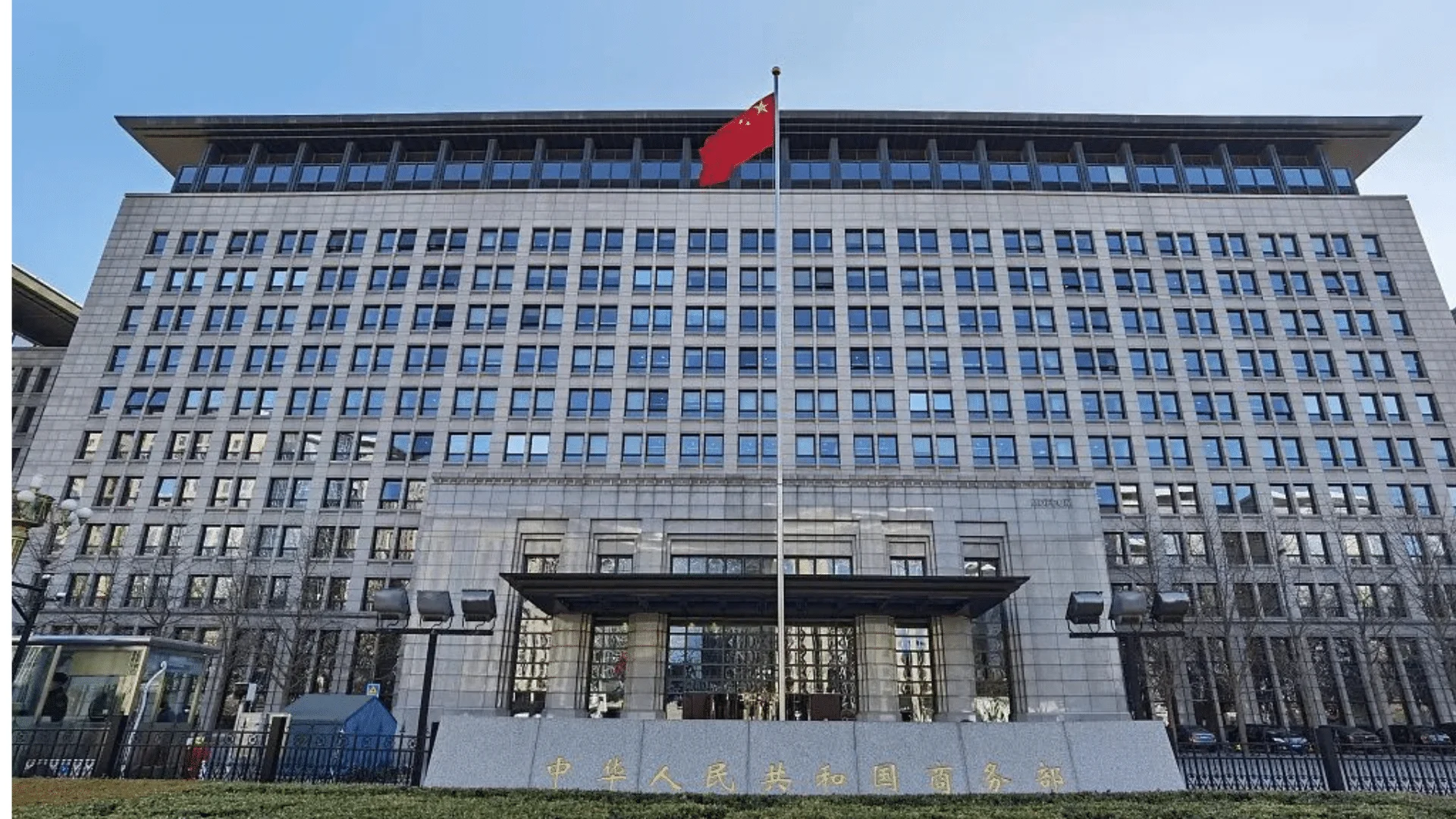
Exterior view of the Ministry of Commerce of the People's Republic of China.
5. Lutetium-related items (1) 1C906.a Lutetium metal, lutetium-containing alloys, and related products:
- Lutetium metal (reference HS code: 2805301910).
- Ytterbium-lutetium alloy.
- Lutetium targets (reference HS codes: 3824999922, 8486909110). (2) 1C906.b Lutetium oxide and its mixtures (reference HS codes: 2846901800, 2846901993, 3824999922). (3) 1C906.c Lutetium-containing compounds and their mixtures (reference HS codes: 2846902810, 2846902910, 2846903910, 2846904820, 2846904910, 2846909920, 3824999922).
6. Scandium-related items (1) 1C907.a Scandium metal, scandium-containing alloys, and related products:
- Scandium metal (reference HS code: 2805301800).
- Scandium-containing alloys: a. Scandium-aluminum alloy; b. Scandium-magnesium alloy; c. Scandium-copper alloy.
- Scandium targets (reference HS codes: 3824999922, 8486909110). (2) 1C907.b Scandium oxide and its mixtures (reference HS codes: 2846901980, 2846901993, 3824999922). (3) 1C907.c Scandium-containing compounds and their mixtures (reference HS codes: 2846902810, 2846902910, 2846903910, 2846904820, 2846904910, 2846909920, 3824999922).
7. Yttrium-related items (1) 1C908.a Yttrium metal, yttrium-containing alloys, and related products:
- Yttrium metal (reference HS code: 2805301700).
- Yttrium-containing alloys: a. Yttrium-aluminum alloy; b. Yttrium-magnesium alloy; c. Yttrium-nickel alloy; d. Yttrium-copper alloy; e. Yttrium-iron alloy.
- Yttrium-containing targets (reference HS codes: 3824999922, 8486909110): a. Yttrium targets; b. Yttrium-aluminum alloy targets; c. Yttrium-zirconium alloy targets. (2) 1C908.b Yttrium oxide and its mixtures (reference HS codes: 2846901100, 2846901993, 3824999922). (3) 1C908.c Yttrium-containing compounds and their mixtures (reference HS codes: 2846902600, 2846902810, 2846903600, 2846903910, 2846904600, 2846904820, 2846909690, 2846909920, 3824999922).
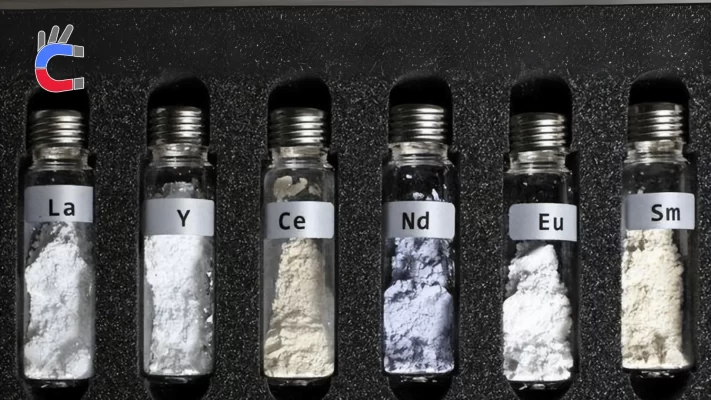
Notes:
- The alloys controlled under items 1C902.a.2, 1C903.a.2, 1C904.a.2, 1C905.a.2, 1C906.a.2, 1C907.a.2, and 1C908.a.2 include forms such as ingots, blocks, bars, wires, sheets, rods, plates, tubes, granules, and powders.
- The targets controlled under items 1C902.a.3, 1C903.a.3, 1C904.a.3, 1C905.a.3, 1C906.a.3, 1C907.a.3, and 1C908.a.3 include forms such as sheets and tubes.
- The permanent magnet materials controlled under items 1C902.a.4, 1C904.a.4, and 1C905.a.4 include magnets or magnetic powders.
- The oxides, compounds, and their mixtures controlled under items 1C902.b, 1C902.c, 1C903.b, 1C903.c, 1C904.b, 1C904.c, 1C905.b, 1C905.c, 1C906.b, 1C906.c, 1C907.b, 1C907.c, 1C908.b, and 1C908.c include, but are not limited to, powder forms.
Export operators who export the above items should apply for a license from the competent commerce authority of the State Council in accordance with the relevant provisions of the “Export Control Law of the People's Republic of China” and the “Regulations of the People's Republic of China on the Export Control of Dual-use Items”.
Export operators should strengthen item identification and, when declaring to customs, should state in the remarks column whether the item is a controlled item. If it is a controlled item, the dual-use item export control code should be listed. If customs have any doubts about the filled-in information, they will question it according to the law, and the export goods will not be released during the questioning period.
This announcement is officially implemented from the date of its release. The "List of Dual-use Items for Export Control of the People's Republic of China" will be updated simultaneously.
Ministry of Commerce and General Administration of Customs April 4, 2025
The above content is from the Ministry of Commerce of the People's Republic of China①.
Rare Earth Classification
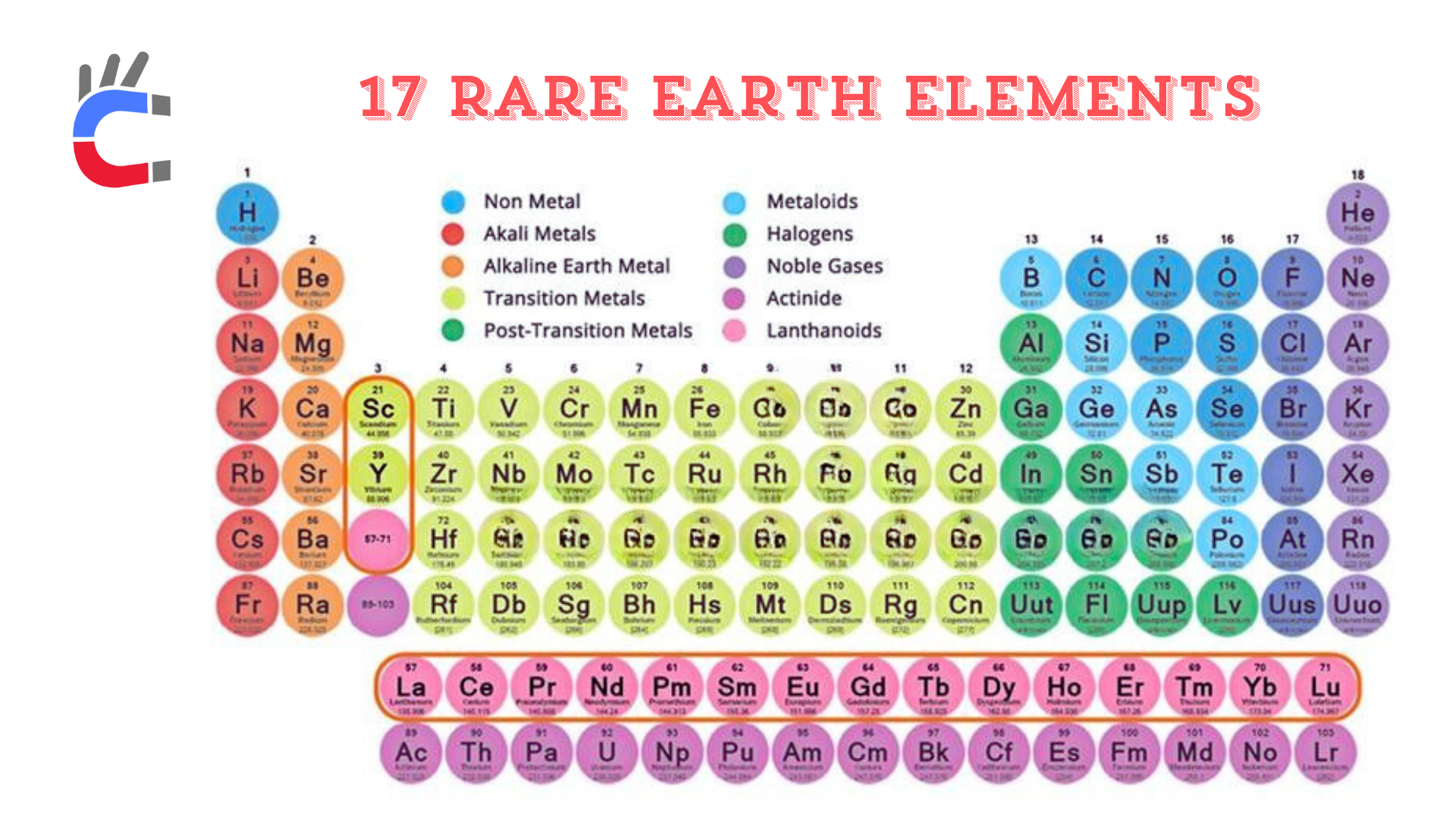
Rare earth elements are usually divided into three categories based on their atomic number, physicochemical properties, and abundance in the Earth's crust: light rare earth elements, medium rare earth elements, and heavy rare earth elements.
Light Rare Earth Elements (LREE)
- Classification: Includes Lanthanum (La), Cerium (Ce), Praseodymium (Pr), Neodymium (Nd), Promethium (Pm), Samarium (Sm), Europium (Eu), and Gadolinium (Gd). Promethium (Pm) is a radioactive element and does not exist in the Earth's crust.
- Applications: Light rare earths have relatively large reserves and are widely used. For example, lanthanum is used in optical glass for mobile phone cameras to improve light transmission. Cerium is a key component of automobile exhaust catalysts, effectively reducing pollutant emissions. Neodymium plays a key role in manufacturing rare earth permanent magnet materials, which are important components of motors for new energy vehicles and wind power generators.
Medium Rare Earth Elements (MREE)
- Classification: The classification of medium rare earths varies, but they usually include Samarium (Sm), Europium (Eu), and Gadolinium (Gd). Sometimes, Terbium (Tb) and Dysprosium (Dy) are also included in this category.
- Applications: Medium rare earths have special applications in the atomic energy field. For example, Samarium, Europium, and Gadolinium are used as control materials and moderators in atomic reactors due to their large neutron capture cross-sections.
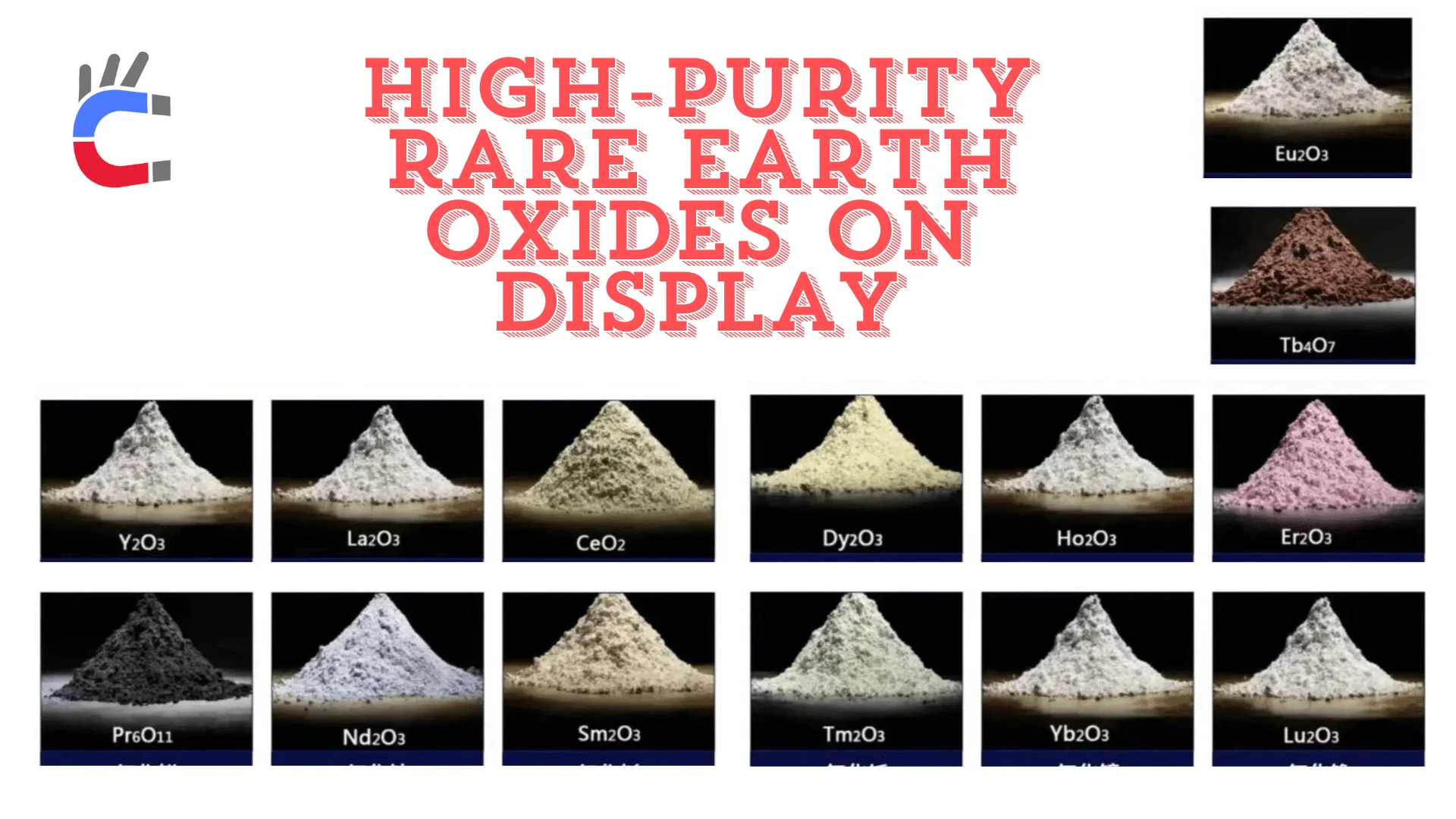
Heavy Rare Earth Elements (HREE)
- Classification: Heavy rare earths usually refer to Gadolinium (Gd), Terbium (Tb), Dysprosium (Dy), Holmium (Ho), Erbium (Er), Thulium (Tm), Ytterbium (Yb), Lutetium (Lu), Scandium (Sc), and Yttrium (Y). Yttrium is also classified as a heavy rare earth element because its chemical properties are similar to heavy rare earths.
- Applications: Heavy rare earths are considered the "lifeline" of high-tech industries due to their scarcity and special properties. Terbium and Dysprosium are core materials for manufacturing permanent magnets, laser materials, radar systems, night vision equipment, and precision-guided weapons. Heavy rare earth elements have irreplaceable strategic value in national defense and high-tech fields.
Detailed Explanation of Controlled Rare Earth Elements and Their Applications
| Element | Rare Earth Classification | Civilian Uses | Military Uses |
|---|---|---|---|
| Samarium (Sm) | Light or medium rare earth | High-strength samarium-cobalt magnets used in small electronic devices like headphones and hearing aids. | Samarium-cobalt magnets are used in the manufacture of stealth materials and high-performance components for precision-guided weapons and radar systems. |
| Gadolinium (Gd) | Heavy or medium rare earth | Gadolinium compounds act as contrast agents in medical MRI to enhance diagnostic accuracy. Used as a neutron absorber in nuclear reactors. | Its high thermal neutron absorption cross-section makes it a crucial control material in nuclear submarines and military nuclear reactors. |
| Terbium (Tb) | Heavy rare earth | Used as an activator for phosphors in energy-saving lamps and tri-color fluorescent lamps. It's a core component in magnetostrictive materials for sonar systems and sensors. | A key material for manufacturing special alloys for military sonar and underwater detection systems. Used in high-performance speakers, vibrators, and actuators. |
| Dysprosium (Dy) | Heavy rare earth | An important additive for neodymium-iron-boron permanent magnets, significantly increasing their coercivity for use in high-temperature environments. Indispensable for electric vehicles and wind power generators. | Used in aerospace, missile guidance systems, and military motors. Also used to manufacture control rods for nuclear reactors and night vision equipment. |
| Lutetium (Lu) | Heavy rare earth | Lutetium compounds are used in nuclear medicine for PET imaging and as radioactive drugs for cancer treatment. | Used in the manufacturing of high-intensity lasers and some special alloys with potential application value. |
| Scandium (Sc) | Heavy rare earth | Scandium-aluminum alloys, known for being lightweight and high-strength, are used to make high-performance bicycle frames and sports equipment. | Scandium-aluminum alloys are used in aerospace and defense for manufacturing structural components of fighter jets and missiles to reduce weight and improve performance. |
| Yttrium (Y) | Heavy rare earth | Used to make the red phosphor in televisions and displays, as well as optical glass and laser materials. Yttrium alloys are used for engine components in the automotive industry. | Used to manufacture high-power lasers and radar systems. A key component in military night vision devices and precision-guided weapons. |
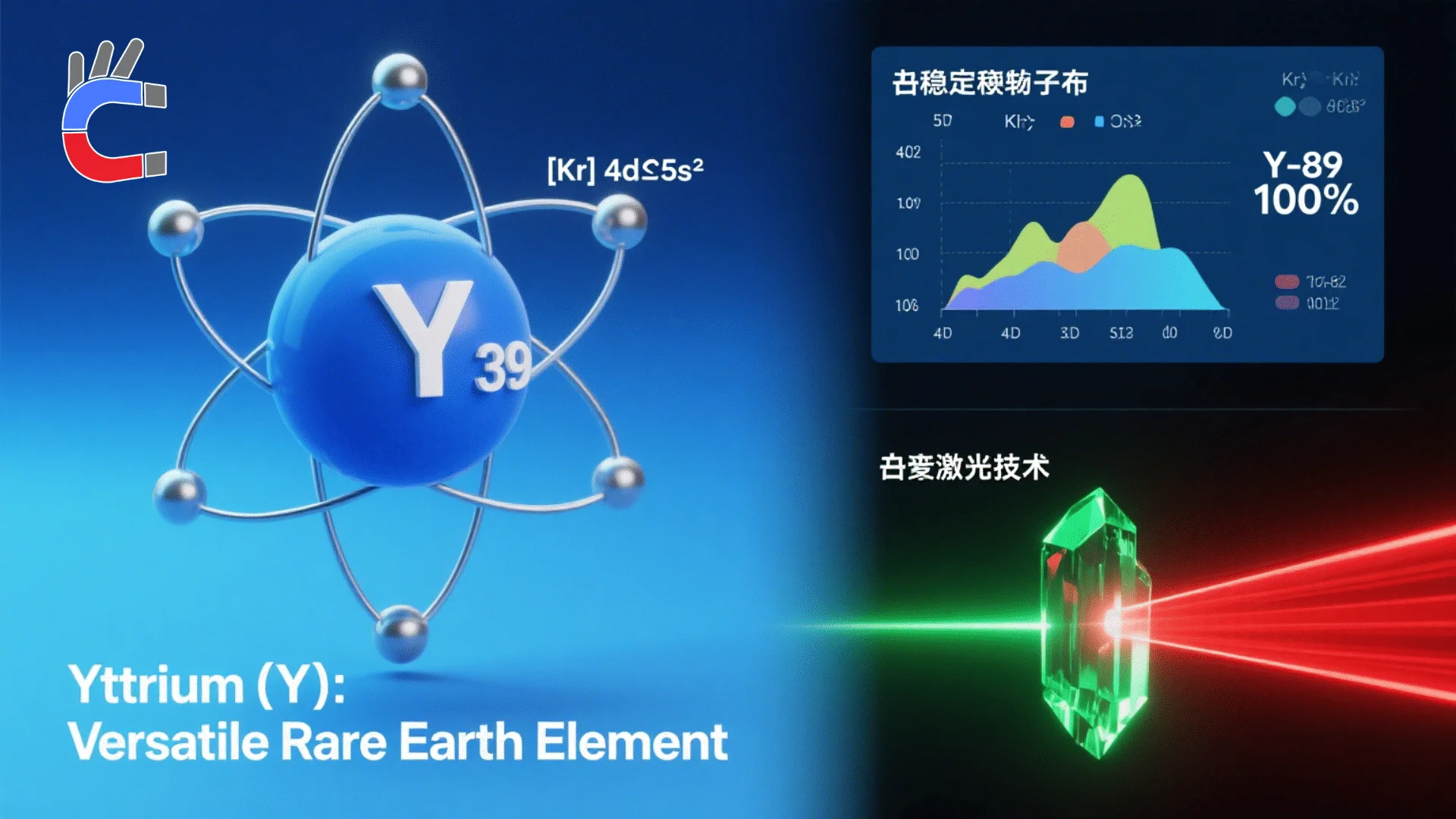
Reasons for China's Implementation of Rare Earth Export Controls

Implementing export controls on rare earths is a necessary step for China to advance the rule of law in its rare earth governance system. It is well known that China ranks first in the world in both rare earth reserves and output. However, for a long time, due to vicious competition and extensive development in the domestic market, China not only failed to gain pricing power in the international rare earth market but also caused severe damage to the ecological environment. Taking Ganzhou, Jiangxi, where heavy rare earth reserves account for 70% of the world's total, as an example, decades of disorderly mining have polluted local farmland to the point where it cannot be cultivated. According to a 2012 estimate by the Ministry of Industry and Information Technology, the cost of ecological restoration in Ganzhou was as high as 38 billion yuan, while the profits from rare earth mining in Ganzhou in 2011 were only 6.4 billion yuan.
The development model that comes at the cost of sacrificing the ecological environment cannot be sustained. Therefore, the Chinese government has taken a series of measures to regulate the development of the rare earth industry. In 2011, China issued the "Several Opinions on Promoting the Sustainable and Healthy Development of the Rare Earth Industry," proposing to implement "stricter protective mining policies and ecological and environmental protection standards" for rare earth resources. In June 2024, China announced the "Rare Earth Management Regulations," which explicitly requires the establishment of a rare earth full-chain supervision system to comprehensively manage rare earth resource exploitation, smelting and separation, product circulation, and import and export activities. In February 2025, the Ministry of Industry and Information Technology publicly sought opinions on the "Measures for the Management of Total Rare Earth Mining and Smelting and Separation Quotas" and the "Measures for the Management of Rare Earth Product Information Traceability," intending to further regulate rare earth mining, smelting, and separation through strengthened total quota control and full-process traceability management to effectively curb smuggling and tax evasion.
This shows that the rare earth export controls implemented by the Chinese government in April 2025 are not a temporary decision, but a natural extension of the aforementioned series of policies. This restructuring of the rare earth industry, which has lasted for more than ten years, aims to correct market failures, plug regulatory loopholes, and transform natural resource endowments into national sustainable development competitiveness. This is not only an inherent requirement for the transformation and upgrading of the rare earth industry but also conforms to the global trend of green development.
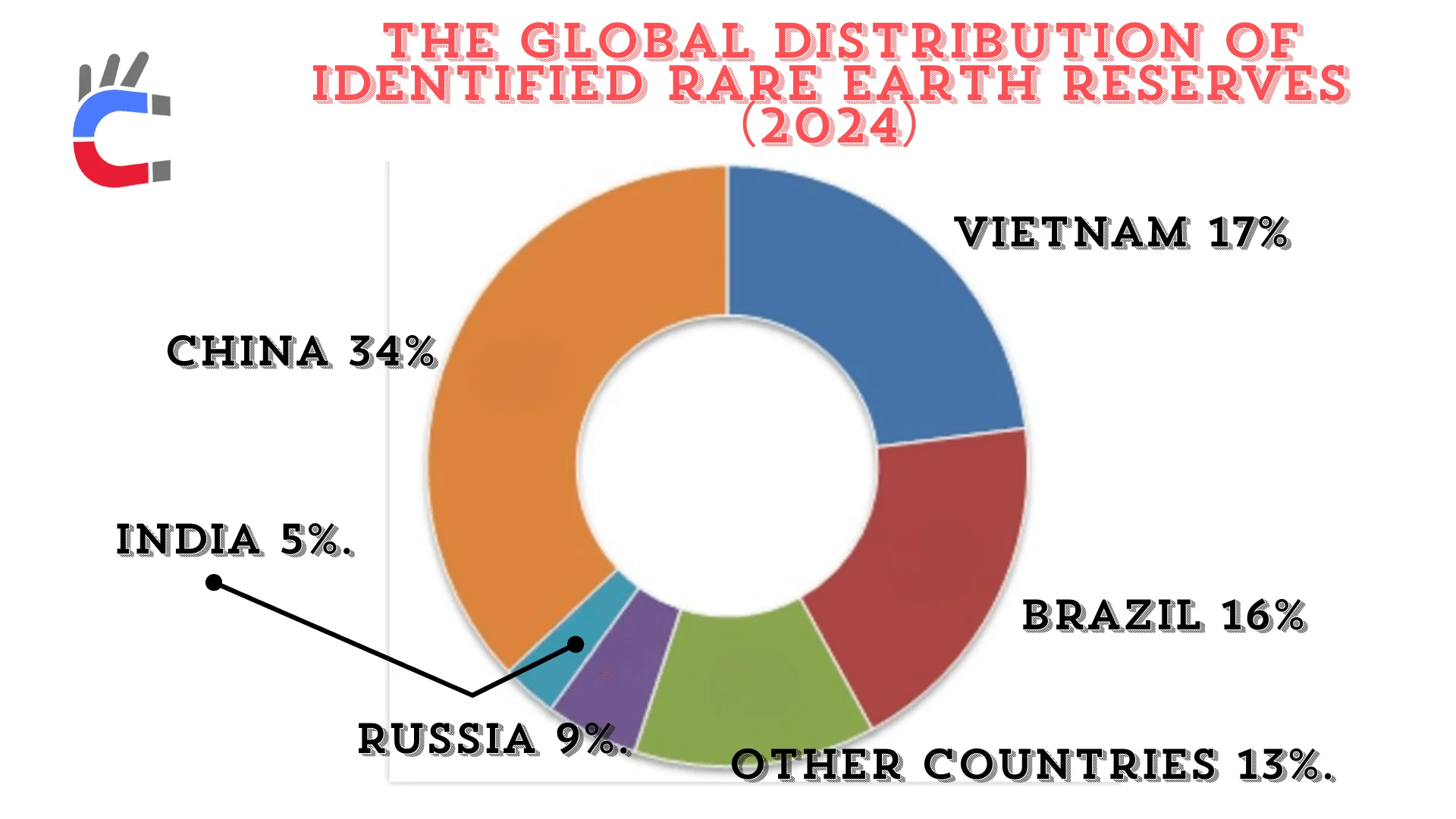
China's move to raise the threshold for rare earth exports is not an attempt to "blockade" or "confront" other countries but is intended to ensure that rare earth resources are used in legitimate civilian fields through a transparent and legal management framework. In response to potential supply shortages in overseas markets after the implementation of the rare earth export controls, China has established a green channel for qualified overseas applicants to accelerate the approval process. On June 12, a spokesperson for the Ministry of Commerce publicly stated that China had legally approved a certain number of rare earth export license applications. In fact, German car companies such as BMW and Volkswagen have successively obtained rare earth supply passes from China in April and May of this year. After the phone call between the Chinese and US heads of state, the Chinese government also issued temporary export licenses to the rare earth suppliers of three US car companies: General Motors, Ford, and Stellantis. China has shown the world with practical actions that as long as there are no activities that harm China's national sovereignty, security, and development interests, the rare earth export controls will not affect the normal business trade of enterprises, nor will it affect the stability and security of the international rare earth industrial chain and supply chain.
China's implementation of rare earth export control measures is a strategic choice based on national security, environmental protection, and the concept of sustainable development. The world is currently in a critical period of energy transition and technological revolution, and the rational allocation of rare earth resources is related to the common future of humanity. It is hoped that the international community can view the purpose and significance of China's move rationally, actively strengthen communication and cooperation with China, and jointly promote the healthy development of the global rare earth industry chain.
The reasons why China implemented rare earth export controls, originally titled "China's implementation of rare earth export controls is not "impulsive"" from China.com, author Le Shui ②
Rare earth export control targets
The controls are aimed at domestic enterprises involved in the export of seven types of rare earths, not at other countries. For normal trade, an enterprise can export after submitting the relevant documents for an export license, obtaining approval, and receiving the export license. He Yadong, a spokesperson for the Ministry of Commerce, stated on June 12, 2025: "China has always attached great importance to maintaining the stability and security of the global production and supply chain. We are continuously accelerating the review of rare earth-related export license applications in accordance with laws and regulations, have legally approved a certain number of compliant applications, and will continue to strengthen the review of compliant applications. China is willing to further strengthen communication and dialogue on export controls with relevant countries and actively facilitate compliant trade".
Do CCmagnetics' products fall under the controlled items?
99% of the products are not within the scope of control, including ferrite encoder magnetic rings, rubber magnetic encoder magnetic rings, bonded NdFeB multipole magnetic rings, climbing magnetic car wheels, magnetic transmission components, etc.
Only high-temperature magnets and finished products containing high-temperature magnets are within the scope of control (NdFeB permanent magnet materials containing terbium and dysprosium), because high-temperature resistance requires the addition of terbium and dysprosium. Terbium's magnetic anisotropy field is very large at low temperatures. Adding terbium to NdFeB magnets can significantly increase coercivity, thereby improving the magnets' performance at high temperatures. Dysprosium can significantly increase the coercivity of NdFeB magnets. Coercivity is the ability of a magnet to resist demagnetization by an external magnetic field, which is especially important at high temperatures.
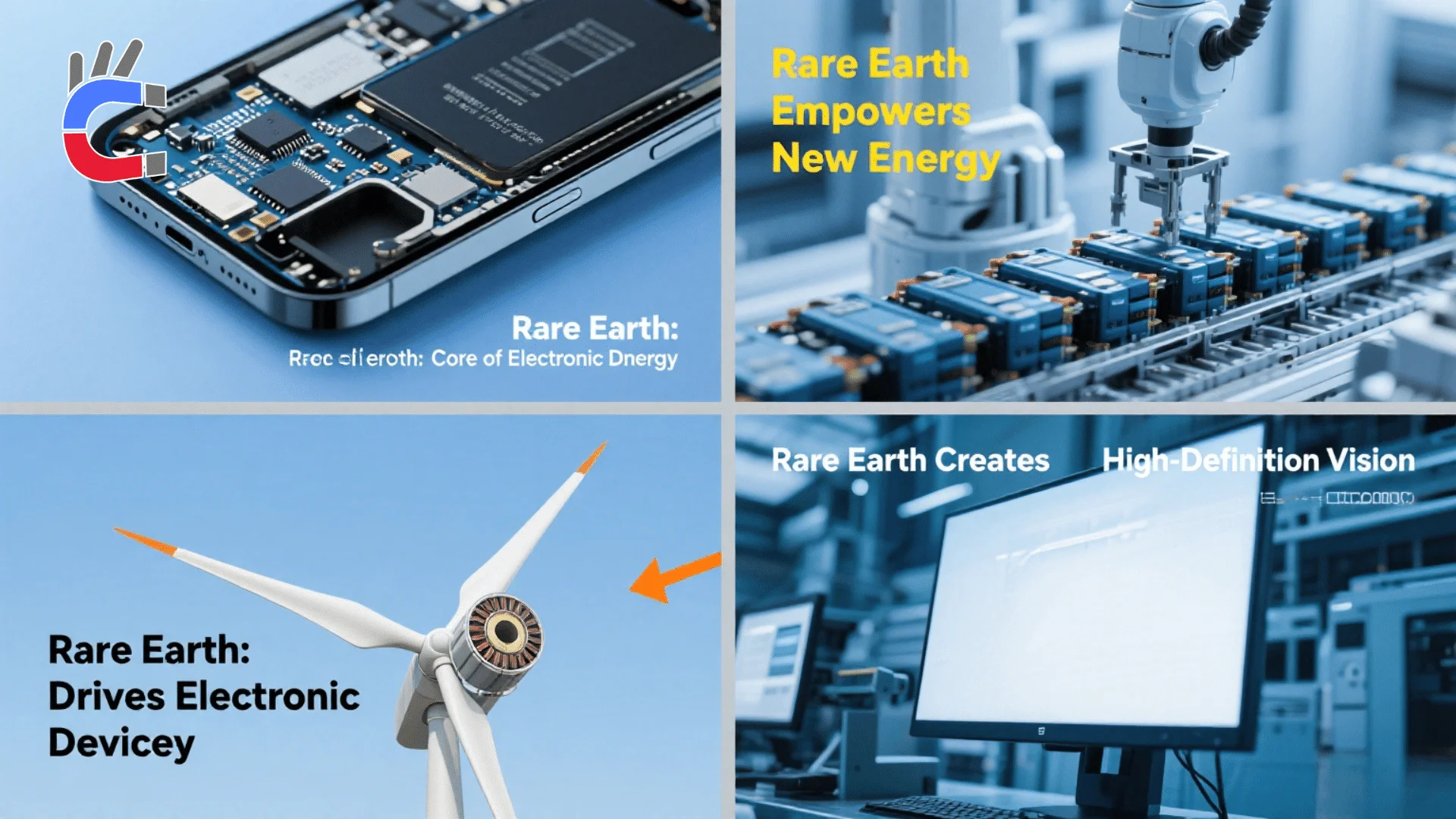
Refer link:
①:https://www.mofcom.gov.cn/zcfb/zc/art/2025/art_a6ea0f03b9be475a9d06ee9d088d605d.html
②:http://www.china.com.cn/opinion/202506/12/content_117923850.html

 Deutsch
Deutsch